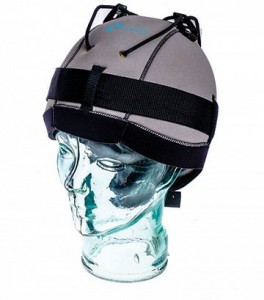Two studies in JAMA examine hair loss among women with breast cancer who received scalp cooling before, during and after chemotherapy.
Chemotherapy may result in hair loss (alopecia), which women rate as one of the most distressing adverse effects of chemotherapy. Scalp cooling is hypothesized to reduce blood flow to hair follicles and reduce uptake of chemotherapeutic agents. Modern methods to prevent hair loss use devices that circulate fluid in a cooling cap using refrigeration. A cap is placed on the patient prior to chemotherapy and does not have to be changed or removed until the treatment is completed.
Although scalp cooling devices have been used to prevent alopecia, efficacy has not been assessed in a randomized clinical trial.
In one study, Julie Nangia, M.D., of the Baylor College of Medicine, Houston, and colleagues randomly assigned 182 women with breast cancer undergoing chemotherapy to scalp cooling (n = 119) or control (n = 63). Scalp cooling was done 30 minutes prior to and during and 90 minutes after each chemotherapy infusion. Hair preservation was assessed at the end of four cycles of chemotherapy. One interim analysis was planned to allow the study to stop early for efficacy.
At the time of the interim analysis, 142 participants were evaluable. The researchers found that patients who received scalp cooling were significantly more likely than patients who did not receive scalp cooling to have less than 50 percent hair loss (with 51 percent of those in the scalp cooling group retaining their hair, compared with 0 percent of those in the control group). There were no significant differences in changes in any of the measures of quality of life between the groups. Only adverse events related to device use were collected; 54 adverse events were reported in the cooling group, none serious.
“Further research is needed to assess longer-term efficacy and adverse effects,” the authors write.
In another study, Hope S. Rugo, M.D., of the University of California, San Francisco, and colleagues included women with breast cancer receiving chemotherapy (106 patients in the scalp cooling group and 16 in the control group; 14 matched by both age and chemotherapy regimen). Scalp cooling was initiated 30 minutes prior to each chemotherapy cycle, with scalp temperature maintained at 3°C (37°F) throughout chemotherapy and for 90 minutes to 120 minutes afterward.
Although scalp cooling has been available for several decades in Europe, use has been limited in the United States because of several factors, including insufficient prospective efficacy data with current chemotherapy regimens and lack of U.S. Food and Drug Administration (FDA) clearance.
Among the 122 patients in the study, the average duration of chemotherapy was 2.3 months. Hair loss of 50 percent or less was seen in 67 of 101 patients (66 percent) evaluable for alopecia in the scalp cooling group vs 0 of 16 patients (0 percent) in the control group. Three of five quality-of-life measures were significantly better one month after the end of chemotherapy in the scalp cooling group. Of patients who underwent scalp cooling, 27 percent reported feeling less physically attractive compared with 56 percent of patients in the control group. Of the 106 patients in the scalp cooling group, four (3.8 percent) experienced the adverse event of mild headache and three (2.8 percent) discontinued scalp cooling due to feeling cold.
“Further research is needed to assess outcomes after patients receive anthracycline [a class of drugs used in chemotherapy] regimens, longer-term measures of alopecia, and adverse effects,” the authors write.


